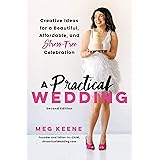For many wedding photographers, the pursuit of capturing perfect moments often overshadows foundational compositional principles. While the video above offers a critical insight into a common framing oversight, a deeper understanding of its roots and implications can significantly elevate one’s craft. Mastering composition is not merely about technical adherence; it involves an intuitive blend of artistic vision and strategic execution. This article expands upon the nuanced challenges and solutions for achieving compelling compositions in wedding photography, particularly regarding subject placement and negative space.
The Subtle Flaw in Wedding Composition for Wedding Photographers
A prevalent error often observed in photography involves excessive headroom above subjects. Similarly, crucial elements like feet or the lower torso are frequently cropped from the frame. This imbalance can subtly undermine an image’s overall impact. Photographs often feel less complete, lacking a certain visual harmony. The subject may appear disconnected from their environment.
This compositional tendency is frequently overlooked by even experienced wedding photographers. It becomes an unconscious habit. A thorough review of past work often reveals this recurring pattern. Correcting this single issue can profoundly transform the storytelling potential of photographs.
Deconstructing the “Headroom” Phenomenon
The primary reason for disproportionate headroom often lies in a photographer’s intense focus on sharpness. Ensuring eyes are critically sharp is paramount in portraiture. This acute attention to a subject’s face can lead to compositional tunnel vision. The photographer’s attention is fixed on the autofocus points. Consequently, the edges of the frame are inadvertently neglected.
Cameras are sophisticated instruments designed for precision. Their advanced autofocus systems guide photographers toward critical focus. This technological aid can, paradoxically, distract from holistic framing. A subject is often placed centrally for safety, ensuring sharp focus. This instinctive centering mechanism frequently leaves unneeded space above the head. It is a common blind spot, even for those with an art background.
The Psychology of Stress and Tunnel Vision in Wedding Shoots
Stress is another significant contributor to compositional inconsistencies. Wedding days are dynamic and often high-pressure environments. Moments unfold rapidly, demanding quick reactions. Photographers operate under immense pressure to capture fleeting emotions.
In stressful scenarios, tunnel vision becomes pronounced. Attention narrows to the most critical element, typically the subject’s face. This instinct ensures the main point of interest is secured. The peripheral vision for compositional awareness diminishes. Subconsciously, subjects are centered for security, preventing them from being cut off. This defensive framing often results in excess space or awkward crops.
Managing stress is crucial for maintaining compositional integrity. Deep breaths and momentary pauses can re-engage broader awareness. Reminding oneself of the larger visual story is key. This mindful approach allows for more deliberate framing. Even in chaos, thoughtful composition can be achieved.
Cultivating a Film-Like Approach to Digital Composition
Adopting a film photography mindset can dramatically improve digital composition. With film, each exposure carries a tangible cost. This inherent value encourages careful consideration before pressing the shutter. The entire frame is often scrutinized with greater diligence. A photographer consciously asks if the image is truly “worth the click.”
Digital photography, conversely, offers unlimited exposures. This freedom can lead to a less critical approach. Compositional errors are often identified in post-production. The habit of “spraying and praying” can develop. Intentionality is sometimes lost in the pursuit of quantity.
To foster a film-like awareness, photographers should actively scan the entire frame. Before exposure, evaluate all four edges. Assess the negative space above the subject’s head. Check for unintended limb truncation at the bottom. This deliberate process refines framing decisions in-camera. It transforms a reactive capture into a proactive compositional choice.
This heightened awareness ensures that full bodies are intentionally included. Or, if a crop is desired, it is executed thoughtfully. Consider the inclusion of a bride’s gown details. A slight camera tilt can reveal intricate fabric. This shift adds significant narrative depth. It avoids vast, empty areas of sky or ceiling. The resulting image feels more balanced and purposeful.
Beyond the Frame: The Broader Impact of Thoughtful Composition
Excellent composition multiplies the impact of an image. It transforms a simple record into a powerful visual narrative. The inclusion or exclusion of elements guides the viewer’s eye. Intentional framing evokes specific emotions and tells a richer story. A perfectly composed photograph feels complete and deeply satisfying.
Consider the difference between a functional portrait and a “magazine-worthy” image. The latter often demonstrates meticulous attention to composition. Every element within the frame serves a purpose. Negative space is deliberately managed. Subjects are positioned with care. This elevates the perceived professionalism of a photographer’s work.
Thoughtful composition also enhances the client experience. Clients receive images that are not just technically sound. They receive artwork that feels polished and intentional. This attention to detail builds trust and satisfaction. It reinforces the value provided by skilled wedding photographers. Ultimately, stronger compositions lead to more memorable and impactful wedding photography.











